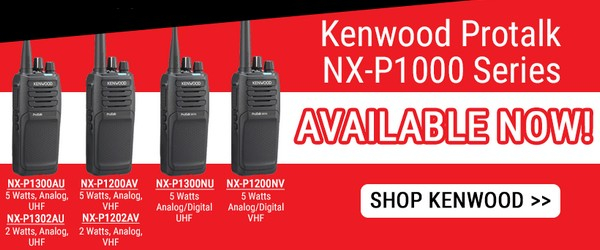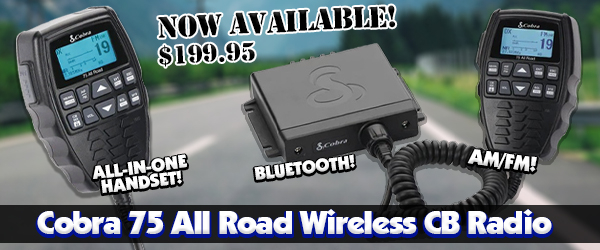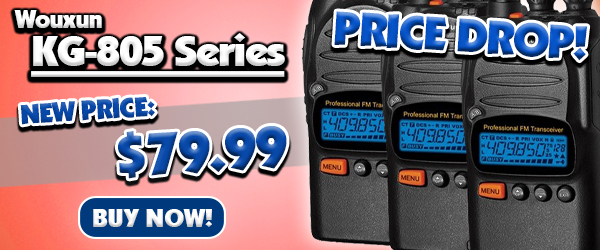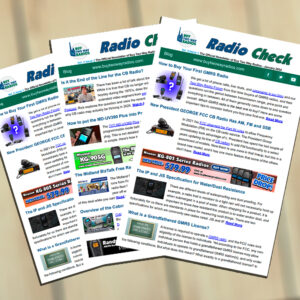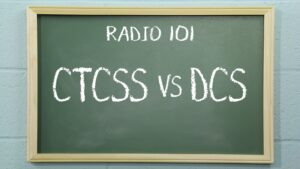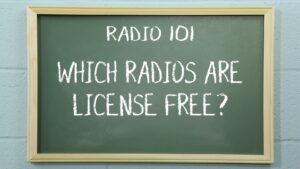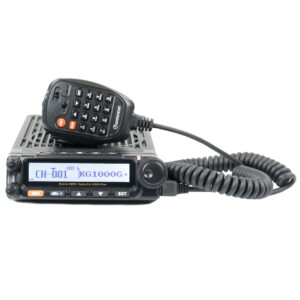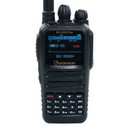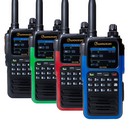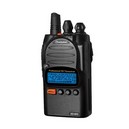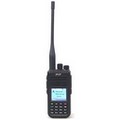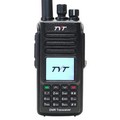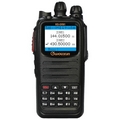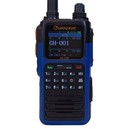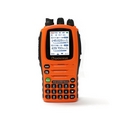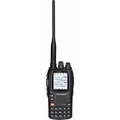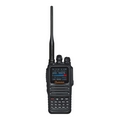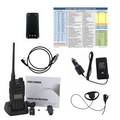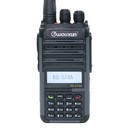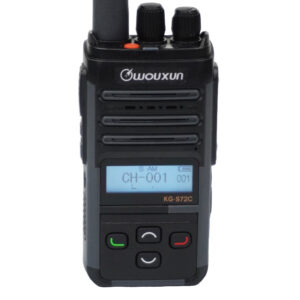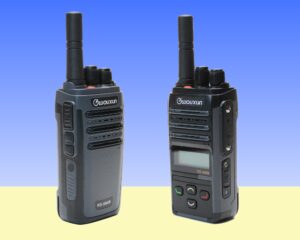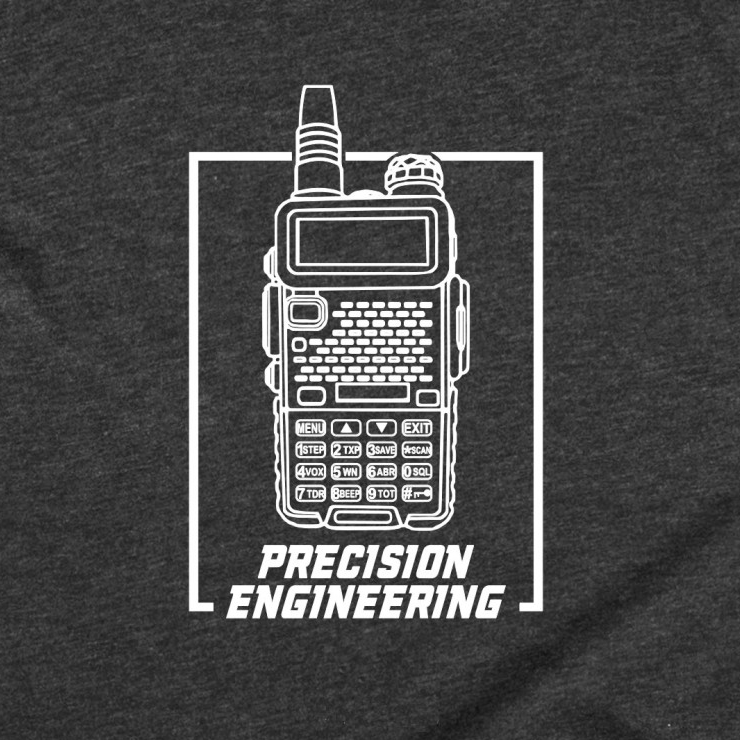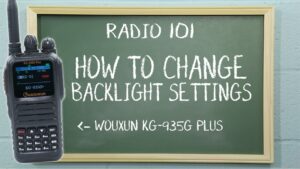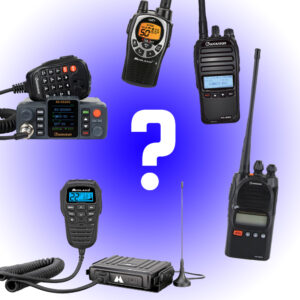 GMRS has been around for decades, yet it has only begun to enter the mainstream within the last couple of years. There are a few reasons for this, among them the Part 95 rule changes in 2017. Then in April 2022, the FCC lowered the GMRS license fee from an exorbitant $70 to a more reasonable $35. Now, as more and more people get on the air who are new to the GMRS and to the world of two way radios in general, the General Mobile Radio Service is thriving.
GMRS has been around for decades, yet it has only begun to enter the mainstream within the last couple of years. There are a few reasons for this, among them the Part 95 rule changes in 2017. Then in April 2022, the FCC lowered the GMRS license fee from an exorbitant $70 to a more reasonable $35. Now, as more and more people get on the air who are new to the GMRS and to the world of two way radios in general, the General Mobile Radio Service is thriving.
We get a lot of phone calls, live chats, and comments in our blog and our Two Way Radio Forum from first time buyers of GMRS radios, and their questions run the gamut between transmission range, price point and everything in between. All of them generally come down to one question overall: Which GMRS radio is the best one to buy?
This is a loaded question, because it is somewhat subjective. Sure, some GMRS radios are better than others, but the truth is, the radio you buy will largely depend on what your needs are, what your budget is, your level of experience and the type of radio you are searching for. There are a lot of GMRS radios out there, and it seems like more are entering the market every day. With all of the choices available, it's easy to become overwhelmed. So, how do you choose the best two way radio for you? No worries, because we can help. At Buy Two Way Radios, it's what we do.
Here are some important tips to consider before you buy your first GMRS radio.
Decide how you will use it.
Are you going to buy a pair or two for general family communications, or a single radio for personal contacts with peers? Are you using it around the house or while out and about in your vehicle? Will you be simply using it for short range radio-to-radio transmissions or calling other users over long distances using a repeater?
These are important considerations, because they will largely dictate how much radio you may or may not need, which will determine where you go with the other tips listed below.
Budget your purchase.
How much are you willing to spend? Whether the radios are a necessity or a pastime, most of us do not have unlimited funds available to throw at our comms. While he old adage is true that you get what you pay for, what are you getting for it, and how much of it can you afford? These are important questions, because if you don't have a plan for what you are willing to spend, you may find yourself overextending your budget without actually getting what you need. Not only will this hurt your wallet, it will likely lead to buyer's remorse which may ultimately lead to a poor experience with your first GMRS radio, or with radios overall.
Don't get caught up in the hype about buying the cheapest radios on the market that have all the bells and whistles, as too many often do. This will likely entangle you in tall weeds of frustration. Instead, the best way to buy a radio is to figure out how you plan to use it, find out what that costs, compare it to what you can actually afford to spend, and if it costs too much, adjust your needs accordingly to make it work within your budget. Sure, it takes more work, but you'll have fewer regrets later. This takes us to the next tip.
Buy only what you need.
It is all too easy to get caught up in the excitement of a new interest, especially when joining a radio group online or local club where everyone is going gaga over the latest and greatest GMRS transceiver. You'll hear them talk about one specific model or another and which one has the most power, clarity, range or everything that is possible to have in a GMRS two way radio.
But do you really need a radio that does it all? Again, that depends on what you plan to do with it. The greatest advantage of having a radio in the first place is that it offers simple, instant communications. Just turn it on, press the push-to-talk button, and talk. Every GMRS radio gives you that.
But many radios available today go beyond the mere PTT, and many go way, way beyond that. Features such as adjustable frequency step, multiple scan modes, tone scan, busy channel lockout, companding, descramblers, call ID, programmable keys, channel and frequency modes, and much more are available in higher end, advanced models. Then there are features such as VOX. Who actually uses it? How many of those other features will you ever use?
If you need all that, fine. Some operators do. However, if you don't know what some of those features are or how to use them, then you probably don't, at least not starting out. The tip here is not to overbuy on your first radio. Buy only what you need, and upgrade to higher models as you gain more experience with using them. It will save you a lot of frustration and angst, and will likely make the overall experience with using radios for simple communication much more enjoyable.
Stick with a real GMRS radio.
There was a time when shopping for a GMRS radio was relatively easy, as there were few true GMRS radios available from which to choose. Almost all of them were hybrid FRS/GMRS models sold in pairs. These were known as "bubble pack" radios, due to the way they were packaged for consumer retail sale.
This all changed in 2017, when the FCC updated the rules for Part 95 and required the dehybridization - yes, that's a real word - of FRS and GMRS radios. Then, Wouxun broke new ground with the introduction of the KG-805G, a true, FCC type accepted GMRS radio that went well beyond the bubble pack models because it was higher wattage, repeater capable and professional grade. Other manufacturers quickly took notice. Suddenly the dam broke, with new models flooding into the market for the GMRS, mostly coming from China. Now there are seemingly countless GMRS radios available from which to choose.
While this greatly expands the potential for maximizing the capabilities of the service, it also creates a new set of problems for those who use the service or seeking to get into GMRS, either as a hobby or a utility. What makes these radios attractive to the average consumer is the price point, because many of them are dirt cheap. However, it also introduces a lot of products that are marketed as GMRS capable, but are not actually approved by the FCC for this purpose.
This also created complications, particularly when it comes to programming. Remember, until the rules were changed in 2017, GMRS radios of that era were simple bubble pack models. They were not user programmed, nor were they user programmable, period. That was the beauty of GMRS. It filled a gap between the home user and professional in the consumer market by providing a "prosumer" option. But what was once a service that combined capability with simplicity, is today about pushing the envelope with more functions and tech, and that often requires programming, usually by the user directly. That makes the radios more complicated.
A common error that many GMRS radio operators make when choosing a first radio is to buy the cheapest one they can find. This is perhaps the biggest mistake one can make for a number of reasons. First, as stated above, many of those radios on the market are not made for GMRS. They are general purpose radios, and they may need to be programmed to the frequencies on which they will be used. If this will be your first radio, and programming one is not you're forte, it's best not buy it, because you may find yourself struggling or frustrated with it, sending the device to the dumpster and leaving you with a bad first impression of GMRS in the end.
Second, some of those really cheap radios are of dubious quality, and may not perform according to your expectations. No need to elaborate on that one. We all know what it means. They are Licensed for Landfills. In other words, Junk.
Third, there is a matter of support. Many of them have little to none. It is going to hurt you when searching for answers to basic questions or common issues with them. Does the seller offer an actual phone number for tech support, or does it hide anonymously behind another marketplace or platform? If there is a support line, is it foreign based or domestic? Can you even talk to a live person? Does the radio come with a manual? Is the manual in English? Is it understandable? If not, you're going to be even more frustrated and lost. Not a great experience with a first radio.
An FCC approved GMRS radio is always the way to go. This is true for several reasons.
The GMRS channels are already programmed and ready use. This is a hard requirement by the FCC in order for the device to be certified as a genuine GMRS radio. If it is not already hard coded and assigned to the required GMRS channels for transmit and receive, and at their proper bandwidth and wattage limits, it's not a true, legal GMRS radio, and the FCC will not accept it as one.
The quality is typically better and there is more support. A radio that is granted FCC certification is going to go through rigorous evaluation and testing to ensure it meets the Commission's guidelines and rules for operation on the GMRS. This means the manufacturer will have a greater attention to detail and a higher level of quality control to produce a radio that meets or exceeds those standards so that it will pass the testing phase and be granted final approval for operation on service.
In addition, the manufacturer is more likely to offer a greater level of support to the users of the radio before and after the sale to be sure those standards continue to be met.
They are legal for use in the US. Yes, it sounds melodramatic, but it really does matter. Will the radio police suddenly knock on your door, confiscate your radio and take you away? Probably not, but if it's really something that may keep you up at night, why torture yourself with worry? Just keep it legal and you'll sleep soundly.
Keep it simple.
As noted above, some of these radios can be quite heavy in the features department. For instance, some models have hundreds of extra programmable channels. Some may even have a thousand or more. But we aren't talking on multiple ham bands here, this is GMRS. There are only 30 channels allocated to the service, and if you are getting an FCC approved GMRS radio in the first place, as we're sure you are, they are already going to be pre-programmed to those channels and frequencies by the manufacturer from the get-go. All you need to do is turn the radio on, tune to your desired channel, and press the PTT button to talk.
Keep in mind that the more sophisticated the machine, the more knowledge is needed to operate it. Are you ready for that? A lot of new radio operators aren't. In fact, a large portion of our support calls are from new GMRS licensees who just bought their first radio and are frustrated with the installation or use of programming cables, software and feature sets that they are unfamiliar with or do not yet understand. Remember, it's your first radio, so go for something that does not require a lot of complicated setup and programming.
Learn how to use the basic radios first, then buy up to the more advanced models as you become more familiar with them.
Our recommendations for your first GMRS radio
There are a number of models that meet all of the qualifications discussed above. Here are a few that we think make a good first GMRS radio.
Midland GXT1000VP4
The GXT1000 is a tried-and-true classic GMRS radio, and has been for more than a decade. It's has a basic set of features with a couple of bells and whistles thrown in. It is quite simple to operate. Just turn it on, pick a channel and transmit. This radio is sold in pairs with headsets and dual pocket desktop charger.
Wouxun KG-805G
The KG-805G is a true business quality GMRS radio that is designed for both new operators and power users. At a full 5 watts, it is also the most powerful handheld radio on this list.
It has the features and ease of use that are available in common lower quality FRS two-packs. It is also repeater capable out of the box. Support for PC programming is not necessary, but is available using the optional programming software, which is a free download. It is sold as a single unit.
Wouxun KG-905G
The KG-905G goes way beyond the bubble pack with features you won't find in typical consumer grade GMRS walkie talkies. One big feature is USB-C charging. The LCD text display is professional grade too, with easy to read icons, customizable channel names and a user selectable Power On message. It's rated IP66 for dust and water protection, which means it is a good radio to take outdoors. It is repeater capable with no serious programming know-how required, but can be programmed if needed. It is sold as a single unit.
Midland MXT275
This is a 15watt mobile GMRS Radio that fits easily in almost any vehicle. It's small, compact, yet powerful. It can be plugged into a 12v vehicle power outlet, so no hardwire installation is required. The package includes a detachable external magnetic mount mobile antenna for quick and easy setup.
It includes important features found on many popular handheld models. It is also repeater capable. The controls are integrated in to the hand microphone, so the main unit can sit under a seat or well behind the dash, out of sight.
Wouxun KG-XS20G Plus
The KG-XS20G Plus is a GMRS base/mobile two way radio that is built for beginners and advanced operators alike. It takes the best features of a full size mobile radio and puts it all into a very compact package that fits into most any vehicle with ease. It is pre-programmed with all 30 GMRS channels, including 8 repeater channels, and can receive on dual UHF and VHF bands. It has NOAA weather channels with alerts, and has a built-in FM radio.
It's also quite rugged. The Wouxun XS20G Plus is rated IP65 for dust ingress and water resistance and the hand microphone is rated IP55, which makes this a great GMRS radio for off-road adventures. Although ready to transmit out of the box, XS20G Plus is also fully PC programmable, so it will keep up with your needs as you become more advanced.
Your first foray into the world of the two way radio should be an enlightening and exciting experience, not one fraught with confusion and frustration. When you follow these basic procedures to decide what you need for a radio, how much you are willing to spend for it, buy only what you need it to do, choose one that is FCC approved and keep it simple, you are more likely to be satisfied with your purchase when you buy your first GMRS radio.
 Summer is a time for all kinds of exciting outdoor activities, and there are many summer activities that utilize radios on the air. It's also a time to kick back and relax on the deck, porch or patio with a nice cool drink and a good book. Of course, if radio is your thing, what better book to read than, well, a book about radio or the tech related to it?
Summer is a time for all kinds of exciting outdoor activities, and there are many summer activities that utilize radios on the air. It's also a time to kick back and relax on the deck, porch or patio with a nice cool drink and a good book. Of course, if radio is your thing, what better book to read than, well, a book about radio or the tech related to it?
